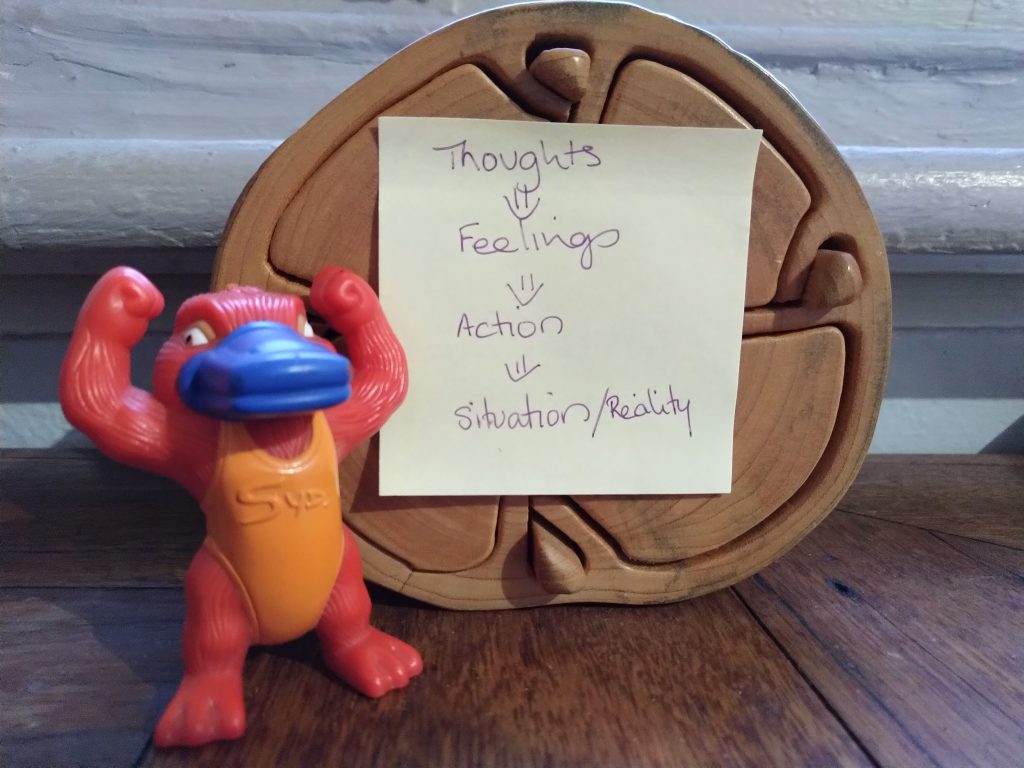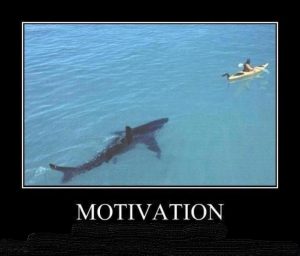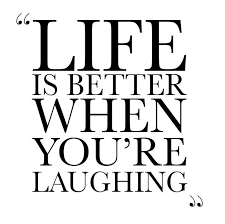
When we are stuck, not taking any action, we often find ourselves wistfully saying if only I had a bit more motivation. But motivation to do what? If you are stuck, it’s most likely there are too many unknown’s. You’re not sure what you want exactly. You may not even be sure where ‘here’ is. Or maybe you have a clear goal, even had it for a while, but you’re just not getting any closer to it and don’t know what to try now.
Why are you procrastinating?
It is impossible to generate action without clarity, the what, why and how of doing. If you are procrastinating there are potentially two issues getting in the way and they occur in this order;
- Not enough planning in at least one of the three stages; what, why and how.
- Emotional resistance
We are often focused on the emotional element first, having been sold the myth that if we feel good we can conquer anything, or that if we resolve old emotional issues we become more effective. Sorry to say, but even when we feel great, we can be idling in the shallows if there is not enough planning.
Let me explain.
Actions are generated by thinking – Feeling ‘good’ or ‘motivated’ cannot initiate actions.
Emotions can, however, block action- Emotions like fear, confusion or uncertainty all signal danger and will stop action. We cannot sustain consistent action when there is significant ‘danger’ except for the actions that ensure survival (see graphic).
Emotions are themselves products of thinking. If we think something is dangerous we feel fear. If we cannot understand a situation we feel confused etc. If emotions can block action it’s understandable why we believe that simply ‘clearing’ these up is enough to stop procrastinating and restart action. But alas no. You still need clarity of what, why and how to start, and stay, in action. Without clarity, you are left in a state of confusion. Confusion is one of the emotions that stop action.
What is motivation?

When we are unable to get into action we say we don’t feel ‘motivated’ enough, using the term as if it’s an emotion. Let’s consider what motivation really means? Motivation means having a motive, a cause or reason to act, it’s our ‘why’, that is, the second stage of planning. Motivation, it turns out, is not something we feel, it is something we think. This means we don’t have enough clarity on ‘why’ we want it, the rewards of reaching our goal and any upside during the process.
For example, you want to study to get a better job. Rewards from finishing the qualification include pride in achievement and increased social status/salary/employability. Rewards along the way may include, leaving a bad job, making new friends, living on campus/new city and for some the joy of learning. All of these only counts if you personally think they are positive.
The ‘why’ must also be the net reward after considering all costs; personal effort, actual costs, potential costs, losing the security of your current position and consequences of doing it badly (taking many years or not graduating). If there is no negative consequence of staying where you are now but action requires much effort for undefined rewards, why make the effort? Because you should? Because you ‘want it’? Neither of these is reasons enough to get you into action.
Are your attempts at ‘getting motivated’ making it worse?
To create sufficient clarity to get into action temporarily throw out the visualisation board, the 5 am alarms and other “simple” success strategies. These can be making the situation worse by creating new emotional barriers to action. Yes, all of these success ‘tools’ can make it harder to start or continue.
If you cannot get yourself into action but have started ramping up ‘motivation’, you are proving your inability to achieve your goal; no action = no progress forward = lost resources (time) = failure. This artificial loss is creating more emotional resistance and barriers to action.
How planning helps!
It’s time to start thinking in much greater detail to get yourself into action. Thinking includes 3 different aspects and they are best started in this order;
- Deciding exactly what you want – setting specific goals and milestones. What does being ‘done’ really look like? For example, you want to be an Art critic. That is a big lofty hard-to-define goal. Instead, you might focus on a specific tangible milestone; to have 5 unique art reviews published within 12 months. With this tighter milestone, you can now plan why this will benefit you and then what actions are needed, which need to be repeated and how often etc.
- Understanding why you want to do this. This can be very tricky and is the place most goals stall. Without reasons you can quantify, you cannot continue to the how stage of planning. But sometimes you cannot work out if your goal is worth the effort until you know exactly how much effort it will it take, the exact value (both monetary and emotional) of the rewards including milestone rewards. So the ‘Why’ phase often needs to include some research on the ‘how’. Analyse (cost + risk) vs. reward of the final goal and each of the milestones. Often the early stages of a plan can appear to be all negative, requiring huge additional effort, like years of education. Having clarity over what the total costs and rewards actually are is very important to both starting and staying in action during the cost/negative phase. For example, knowing how much salary advantage your qualifications can give you over the next 25 years versus the costs of tuition and salary lost during study.
- Finally, how you would go about it all. To quantify the why you have already completed some of the how. The danger here is to think your initial considerations of how are enough to get started. Certainly, if you did the why analysis thoroughly it will ‘feel’ great. Seeing how much more upside than effort there is will energise you. You are as they say; on fire!. But beware, you will need to go into ALL the details to prevent resistance creeping back or becoming totally stalled later.
If a lot of detail makes planning seem overwhelming, then plan for a shorter horizon to a specific milestone which has a significant tangible reward. The reward must be big enough to justify the effort even if you go no further. Do you need a 5-year plan or a 3 month one? For example, will completing just the one stage of the education give you enough upside? Big goals do take a long time to achieve, but the longer the time frame you set, the harder it will be to plan at a detailed enough level to get started.
Just do it – and the never give up death-trap

Should the story of Edison trying a thousand different materials for the filament in the lightbulb inspire us to never give up?
No. Edison had a real plan and was following a proven success process.
As a scientist, his life was about discovering things by hypothesising and experimenting with a range of options, to eliminate what does not work, in order to establish what does. So ‘failure’ is a positive action in his context that directs future actions toward success. There was also no social downside, everyone expects scientists to fail continuously. Financially risk? Nope, he was being paid to conduct these experiments. When a reporter asked, “How did it feel to fail 1,000 times?” Edison replied, “I didn’t fail 1,000 times. The light bulb was an invention with 1,000 steps.”
But if you are not following a proven plan and being paid for the journey, then continuously ‘failing’ will create a huge toll on your mental health, perhaps to the extent that it will rob you of your energy to perform in other parts of your life.
Should you stop wanting things if you cannot work out how to achieve them?
No.
Just don’t torture yourself if you are doing nothing about making it happen, nor confuse wanting, wishing and hoping with having a goal.
To want something and let the ‘universe provide’ can sometimes help gather information to allow detailed planning and thus get you into action later. Coming back to the art critic, with your heightened desire to achieve the goal of publishing 5 articles, you become more observant of relevant issues. You notice adverts for writing courses, ask more questions of anyone who is already in the field, read more about art, and so forth. All this ‘universe’ provided input contributes to being able to start really planning, by clarifying parts of the what, why, or how.
The role of research and networking
As a variation to waiting on the universe to provide, you can actively seek more input on any of the three stages, by researching or interacting with people who are already on this journey.
Planning is boring
Agreed. So is brushing your teeth, and as adults, we know there are real consequences, physically in the long term and socially in the short term, if we don’t do it. To succeed, planning is not just an event, it is a daily component of success. This does not mean you are continuously changing the plan, rather maintain clarity you may need to review it daily or refine it as you progress and you have more information. If you talk to anyone with greater success than you, you will see that they have done, and are doing, more planning than you are currently doing.
While enough planning must occur before action can start, you will need to be continually planning on a daily, and if unforeseen obstacles emerge, even an hourly basis for action to continue. We have many names for this continuous planning, like ‘time management’ and being ‘agile’ or ‘responsive’. This can be happening subconsciously, which does work beautifully for some people. But regardless of your usual style, if you are procrastinating you need to do your daily planning consciously, at least till are fully active again.
Where does a coach fit in?
There are lots of misconceptions about the role of the modern-day business coach. A coach is not here to provide public accountability and to keep your ‘toes to the fire’. These just increase your emotional risk of humiliation and reduce action. We don’t need to pay anyone to tell us we are behind schedule. If you think you do need someone to tell you, then you probably have a parent or sibling who will gladly do this for free.
Coaches help us becoming better at the planning, improving our skills (doing) and managing our emotions on the journey.
- Planning: Giving you the headspace to plan, by focusing your attention on the goal, why it matters to you and its steps. Providing skills and methodology for planning. While a coach does not need to be a subject expert they need to be good at analysis and planning, otherwise, you could use any friend to question your decisions.
- Doing: Improving your activity by helping to analyse the progress and by offering feedback. By telling your coach how you felt you are not just sharing the burden, but this conversation can lead to practical adjustments to the plan, improving your results, and reduce the emotional consequences over time.
- Managing emotions: Moral support while you learn to crawl. A cheer squad on the journey who is objectively able to say, “your winning because you’re getting better and failing less now”. The feedback that you are going forward, no matter how slowly, reduces your fear response and makes future actions easier. When you work alone the uncertainty of not knowing if your effort is moving you forward is enough for your brain to stop all activity to conserve energy for actions that can produce positive outcomes.
We all need help making things happen in our lives. A few coaching sessions could be the start of a new adventure or the insight to conquer a specific roadblock. Let’s start the conversation by emailing me at maya@salesinventoryprofile.com
Corporate Coaching since 1994 in Sydney or by Skype across Australia and New Zealand.

 Resolved is different from forgotten. You can resolve painful emotions around events and still rememeber what happened. When you think back to the event, there may even be some residue negative charge/emotion, but this is akin to scar tissue. The scar is not going to spread into something more dangerous by continuing to influence your thoughts and actions on a daily basis.
Resolved is different from forgotten. You can resolve painful emotions around events and still rememeber what happened. When you think back to the event, there may even be some residue negative charge/emotion, but this is akin to scar tissue. The scar is not going to spread into something more dangerous by continuing to influence your thoughts and actions on a daily basis.
